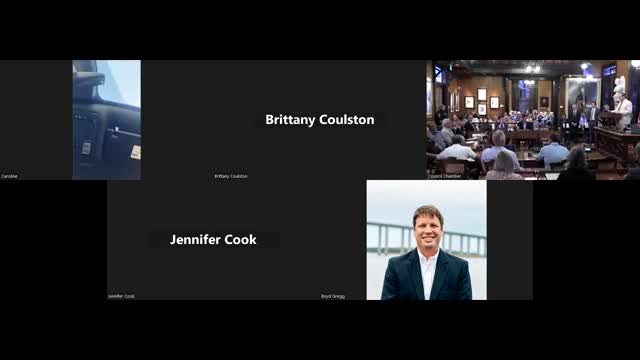City leaders strategize to combat flooding crisis
August 27, 2024 | Charleston City, Charleston County, South Carolina
This article was created by AI summarizing key points discussed. AI makes mistakes, so for full details and context, please refer to the video of the full meeting. Please report any errors so we can fix them. Report an error »

During a recent government meeting, city officials discussed critical flood management strategies for the Charleston Peninsula and surrounding areas, emphasizing the importance of integrated basin maps and interconnecting stormwater systems. Councilman Mitchell highlighted the need for comprehensive planning, noting that the peninsula is divided into two basins, which complicates flood management efforts. He stressed that projects like Union Pier must consider the entire basin to effectively utilize public funds and enhance resilience.
City officials outlined ongoing investments in key pump stations, including the King Huger, Concord, and Spring Fishburne stations, with plans to integrate these systems to improve flood resilience across the peninsula. The discussion also touched on the significance of identifying flood risk areas through modeling efforts, particularly on James Island, where targeted projects have been proposed to address potential flooding from various sources.
Councilmember Parker sought clarification on the prioritization of projects listed for James Island, which were identified based on flood risk assessments. Officials confirmed that while the projects are not ranked, they serve as a guide for future intergovernmental collaboration to tackle flooding issues effectively.
Additionally, the meeting addressed the potential repurposing of the old sewer system for flood management. However, officials noted that the dilapidated state of the system renders it unviable, although there are plans to rehabilitate the existing brick arch system, which could play a crucial role in stormwater management.
The conversation underscored the necessity for regional coordination among neighboring municipalities like North Charleston and Mount Pleasant, as flooding impacts extend beyond city boundaries. Officials expressed a commitment to collaborative efforts to address flooding and protect the tax base, ensuring that residents remain safe and secure in their communities.
City officials outlined ongoing investments in key pump stations, including the King Huger, Concord, and Spring Fishburne stations, with plans to integrate these systems to improve flood resilience across the peninsula. The discussion also touched on the significance of identifying flood risk areas through modeling efforts, particularly on James Island, where targeted projects have been proposed to address potential flooding from various sources.
Councilmember Parker sought clarification on the prioritization of projects listed for James Island, which were identified based on flood risk assessments. Officials confirmed that while the projects are not ranked, they serve as a guide for future intergovernmental collaboration to tackle flooding issues effectively.
Additionally, the meeting addressed the potential repurposing of the old sewer system for flood management. However, officials noted that the dilapidated state of the system renders it unviable, although there are plans to rehabilitate the existing brick arch system, which could play a crucial role in stormwater management.
The conversation underscored the necessity for regional coordination among neighboring municipalities like North Charleston and Mount Pleasant, as flooding impacts extend beyond city boundaries. Officials expressed a commitment to collaborative efforts to address flooding and protect the tax base, ensuring that residents remain safe and secure in their communities.
View full meeting
This article is based on a recent meeting—watch the full video and explore the complete transcript for deeper insights into the discussion.
View full meeting